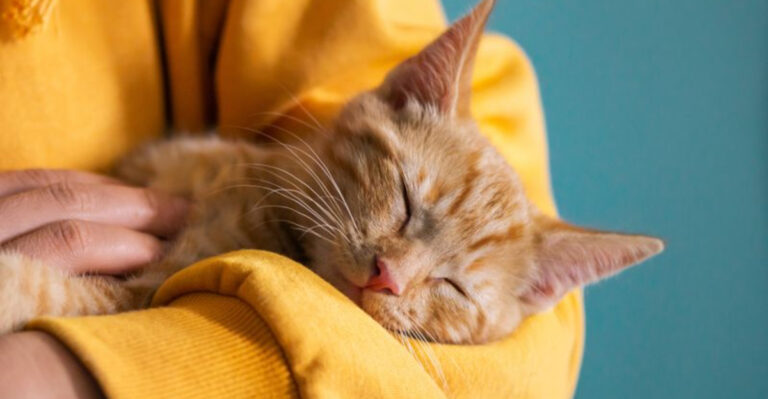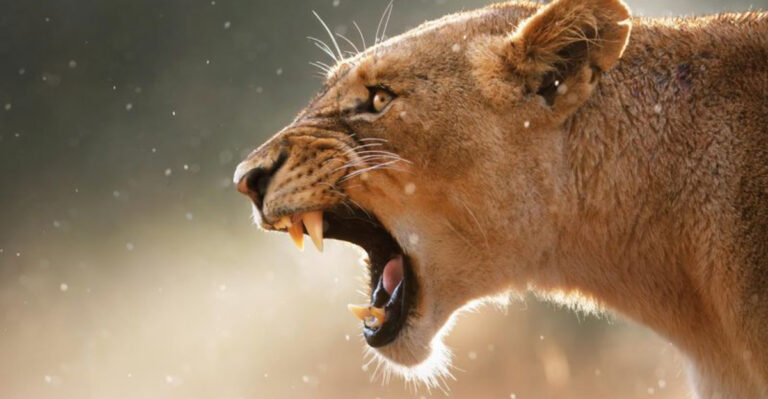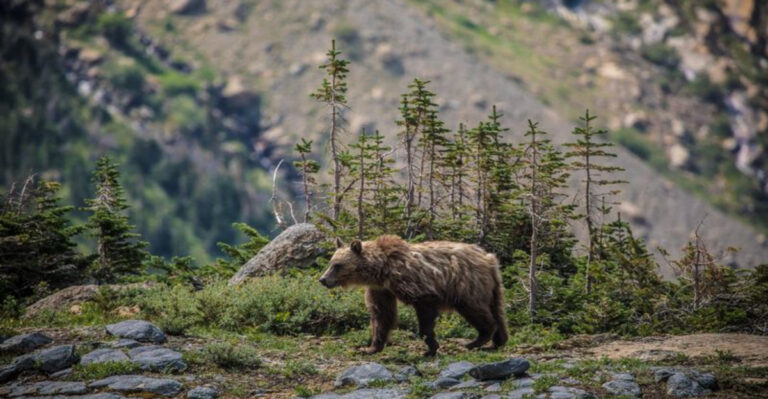14 Mind-Blowing Facts About The Fossa, Madagascar’s Hidden Predator
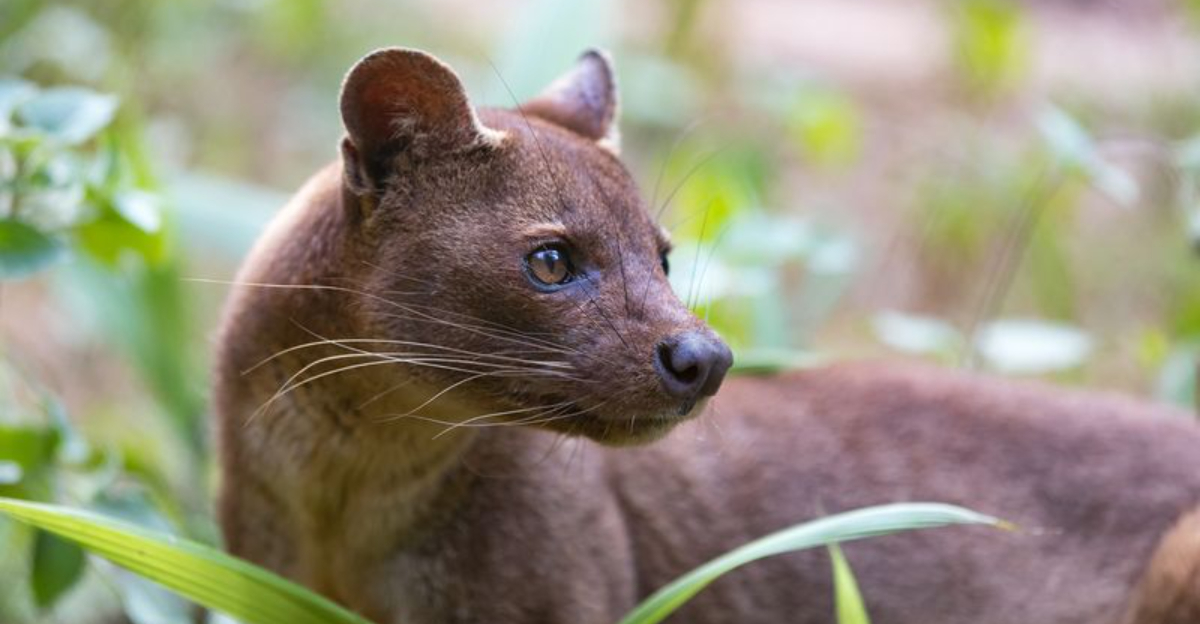
Discover the fascinating world of the fossa, Madagascar’s most enigmatic predator. This elusive creature, often misunderstood, holds a vital place in the island’s ecosystem.
From its mongoose relatives to its exceptional climbing skills, the fossa is a marvel of nature. Join us as we explore astonishing facts about this agile and intriguing animal.
1. It’s The Largest Carnivorous Mammal On Madagascar
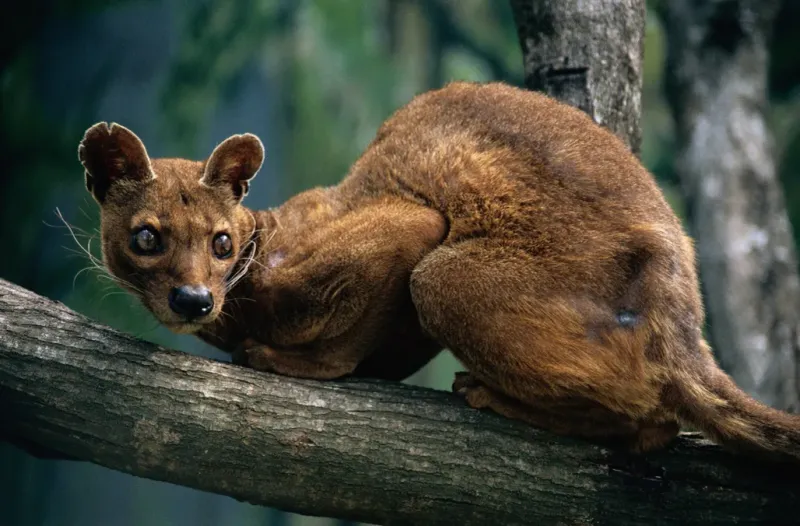
Standing as the top predator in Madagascar, the fossa maintains ecological balance on the island. With no natural predators of its own, it commands the food chain.
Its role as a carnivore is crucial in controlling prey populations. This solitary creature roams the forests, asserting its dominance with grace and power.
2. It’s Closely Related To The Mongoose
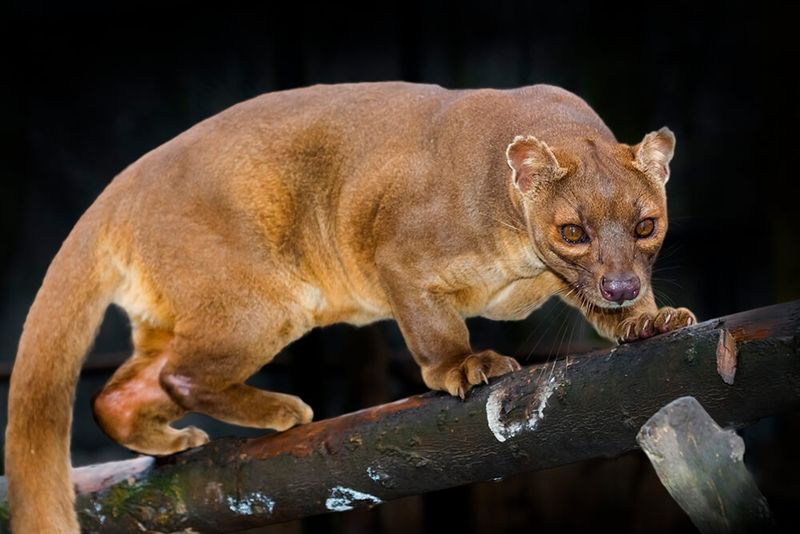
Despite its striking resemblance to a cat, the fossa is closely related to mongooses. It shares behavioral traits with these fascinating creatures, including their curious nature and social dynamics.
This genetic connection adds a layer of complexity to the fossa’s identity, making it not just a predator but a part of Madagascar’s rich tapestry of life.
3. It’s An Exceptional Climber
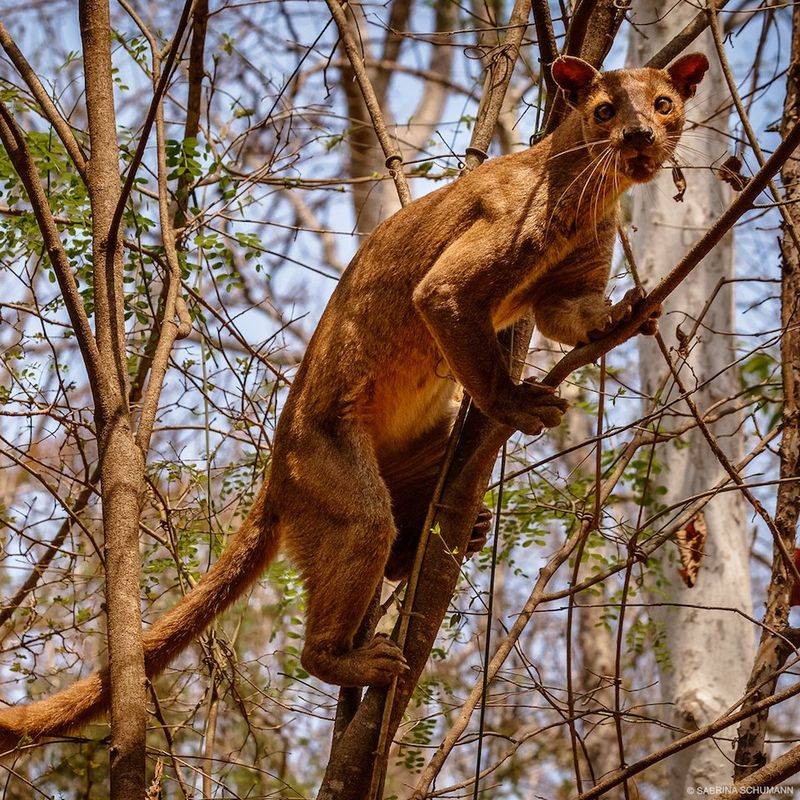
The fossa is a master of the treetops, its retractable claws and elongated body making it a formidable climber. This skill allows it to hunt effectively in trees, ambushing prey with stealth and agility. Its climbing prowess is not just for hunting but also for escaping threats and exploring its arboreal habitat.
4. It Has The Agility Of A Cat
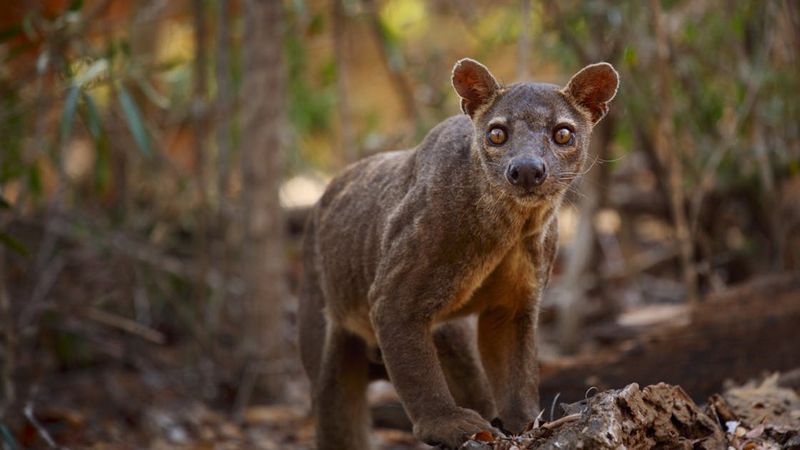
With an agility rivaling that of a cat, the fossa moves through its forest home with remarkable ease. Its ability to leap from branch to branch enables it to chase and capture prey swiftly.
This agility is not just functional but also a spectacle, as it navigates the complex terrains of Madagascar’s forests with elegance.
5. It Has A Unique Mating Ritual
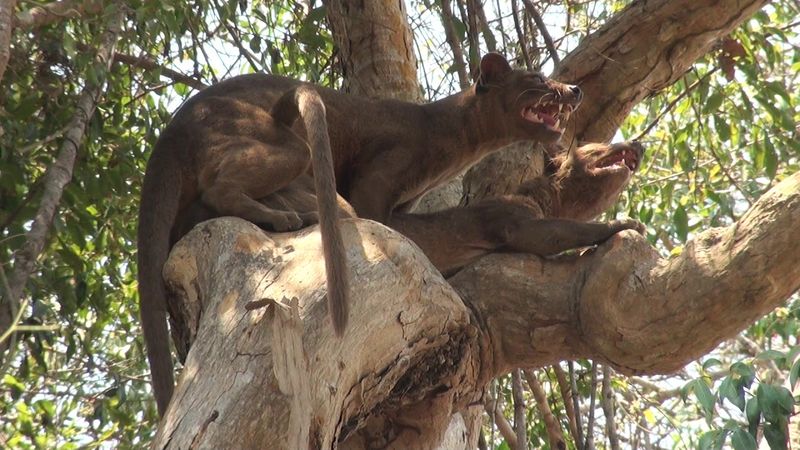
The fossa’s mating ritual is a spectacle of nature, with females exhibiting vocalizations and scent-marking. Mating often occurs in trees, adding an element of mystique to their behavior.
This ritual not only ensures the continuation of their species but also solidifies bonds among these solitary creatures during breeding season.
6. It Has A Flexible Diet
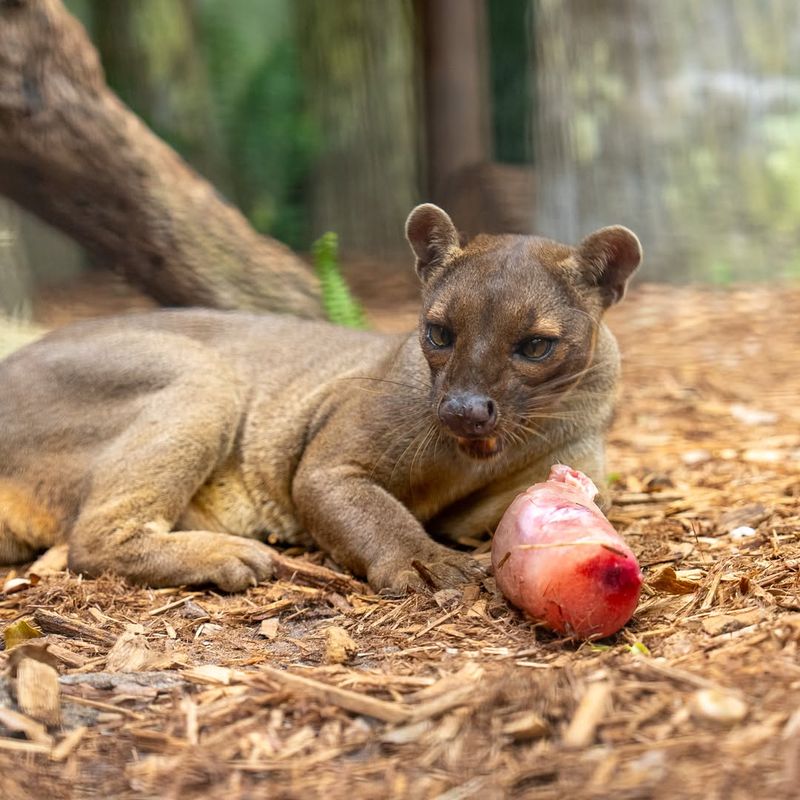
The fossa boasts a varied diet, adapting to available resources in its environment. From hunting lemurs and birds to scavenging or feasting on fruits, its dietary flexibility is a survival strategy.
This opportunism not only sustains the fossa but also supports ecological balance by controlling various animal populations.
7. It Can Run At High Speeds
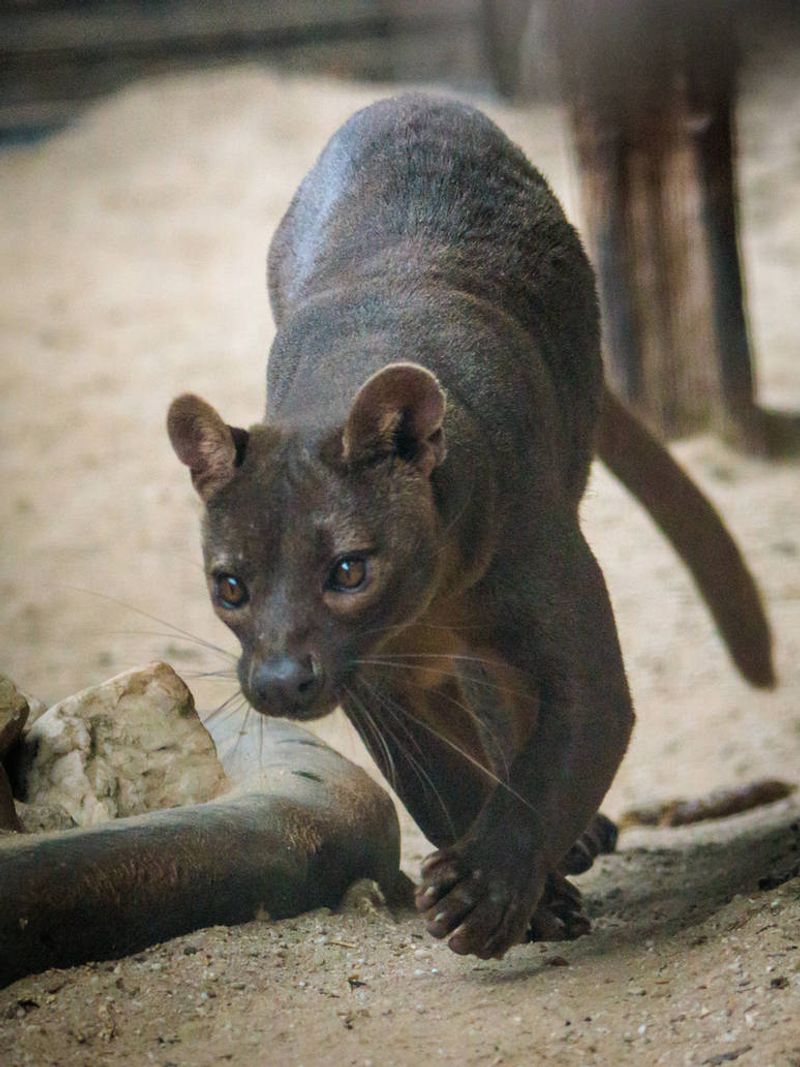
Able to run at speeds up to 35 miles per hour, the fossa is a swift predator, capable of chasing down fast-moving prey.
This speed, combined with its agility, makes it a formidable hunter. Its ability to move quickly through the dense forests of Madagascar is a testament to its evolutionary adaptations.
8. Its Diet Includes Lemurs
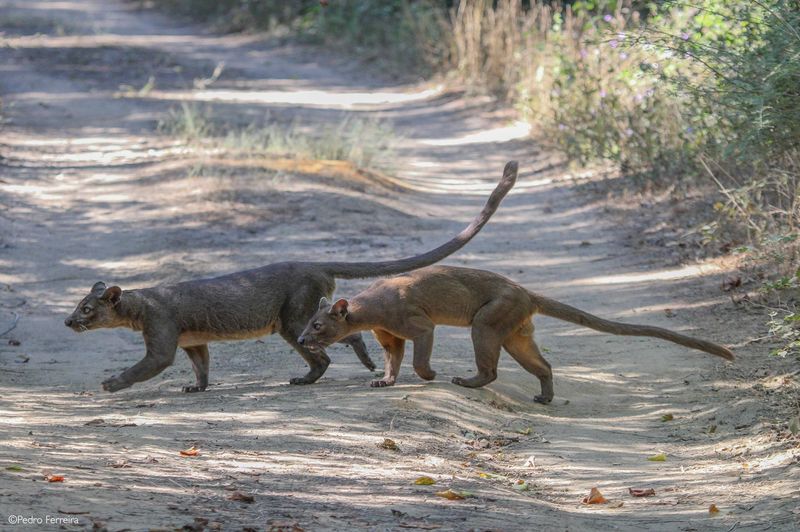
As one of the few predators of lemurs, the fossa plays a critical role in controlling their populations. This dietary preference highlights its position at the top of the food chain.
Its ability to hunt these agile primates speaks to its own agility, intelligence, and adaptability in Madagascar’s diverse ecosystems.
9. It Has Sharp, Retractable Claws
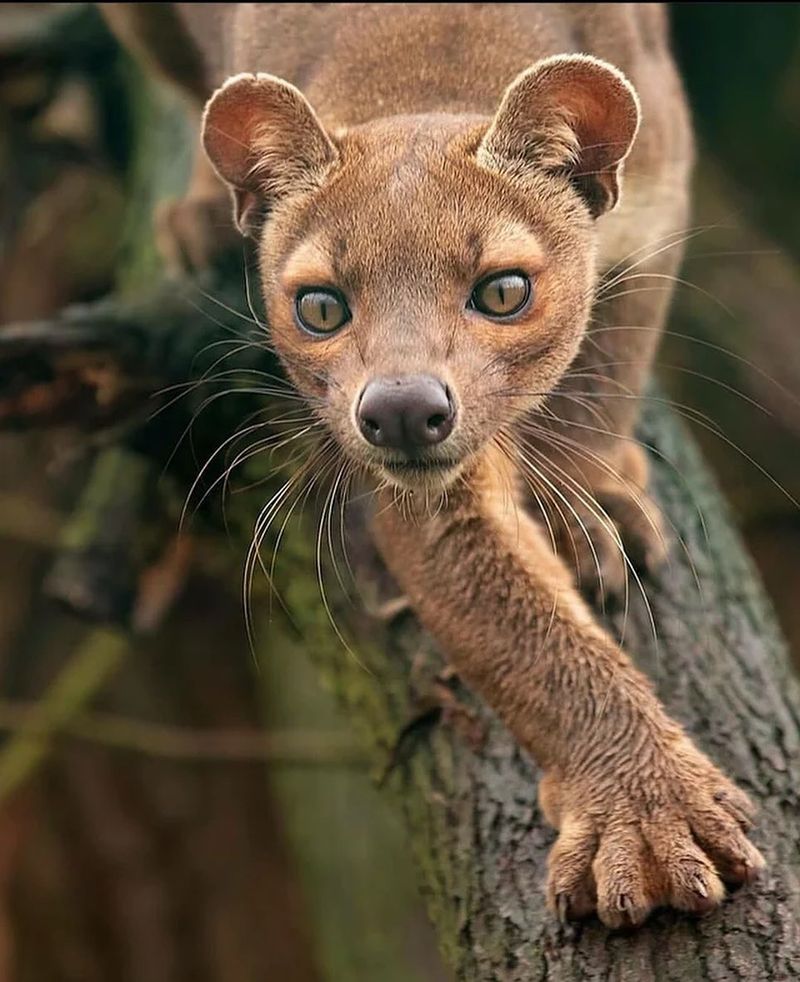
The fossa’s sharp, retractable claws are a key adaptation, allowing it to grip prey and climb with precision. This feline-like trait enhances its hunting efficiency and arboreal capabilities.
These claws are not just tools for survival but also symbols of its predator status in the jungles of Madagascar.
10. It Has Excellent Night Vision
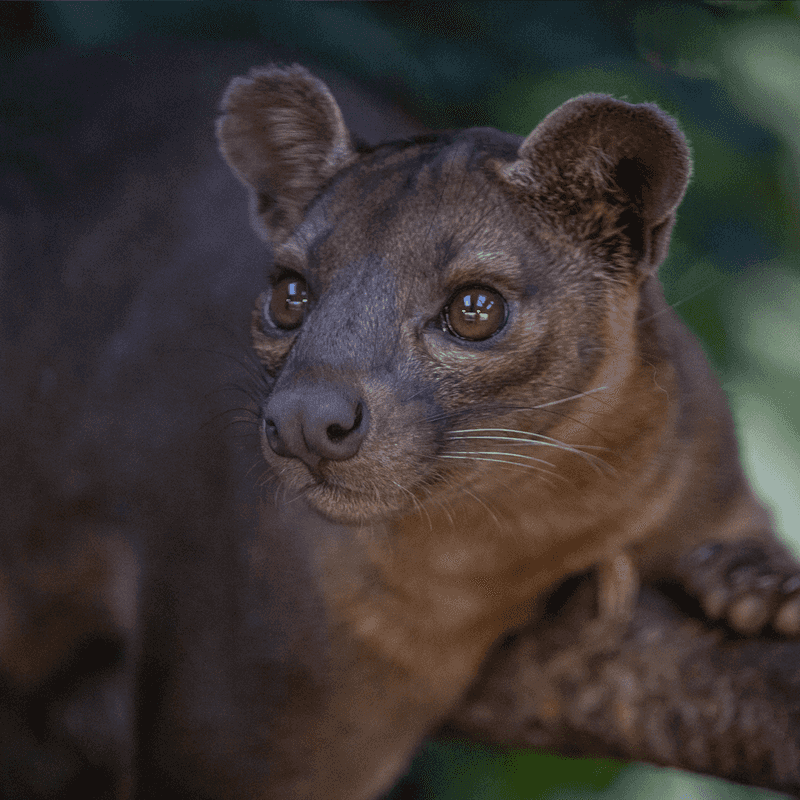
With eyes adapted for the dark, the fossa excels in nighttime hunting. This superior night vision gives it an edge when stalking prey under the cover of darkness.
Its ability to see clearly in low light conditions highlights its evolutionary honing for survival in Madagascar’s nocturnal landscapes.
11. It’s A Solitary Animal
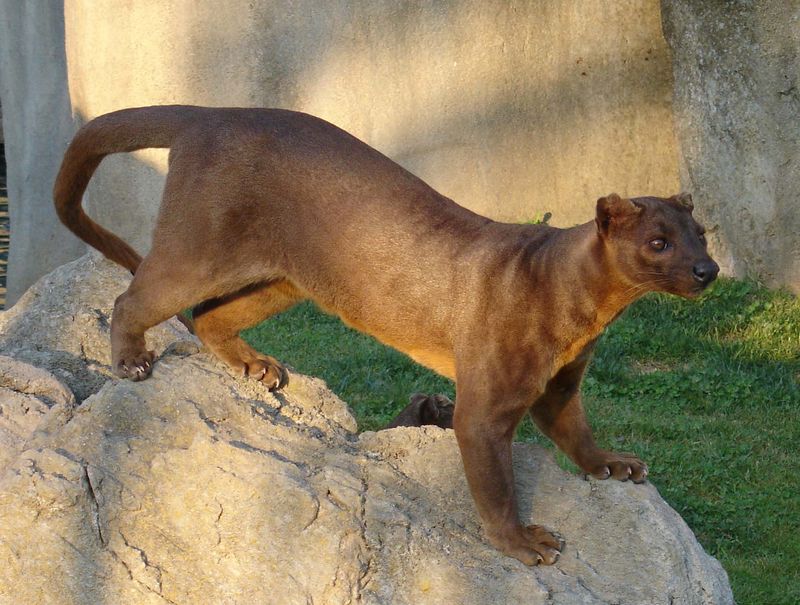
Living primarily alone, the fossa marks its territory and hunts independently.
This solitary nature is punctuated only by the mating season, where slight social interactions occur. Its preference for solitude underscores its independence and strength as a top predator in its natural environment.
12. It Has A Limited Range
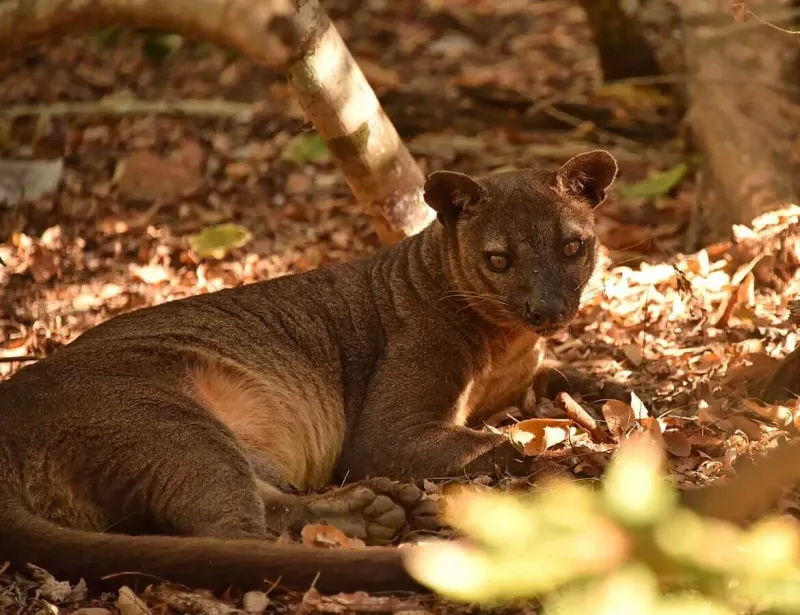
Endemic to Madagascar, the fossa’s range is limited to the island’s forests and nearby foothills. This restricted habitat is both a haven and a challenge, as deforestation poses threats to its survival.
Understanding its range helps in conservation efforts, ensuring this unique predator thrives in its native land.
13. It Can Leap Across Large Gaps
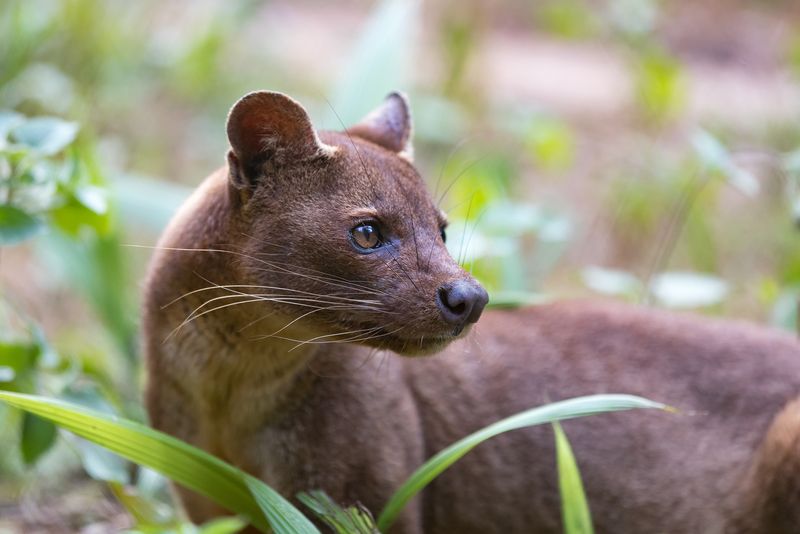
Witness the fossa’s incredible jumping ability as it leaps across tree gaps up to 10 feet wide.
This agility is powered by its muscular build and keen senses, allowing it to navigate its arboreal home with ease. It’s a spectacular display of strength and precision in Madagascar’s dense forests.
14. It’s Critically Endangered
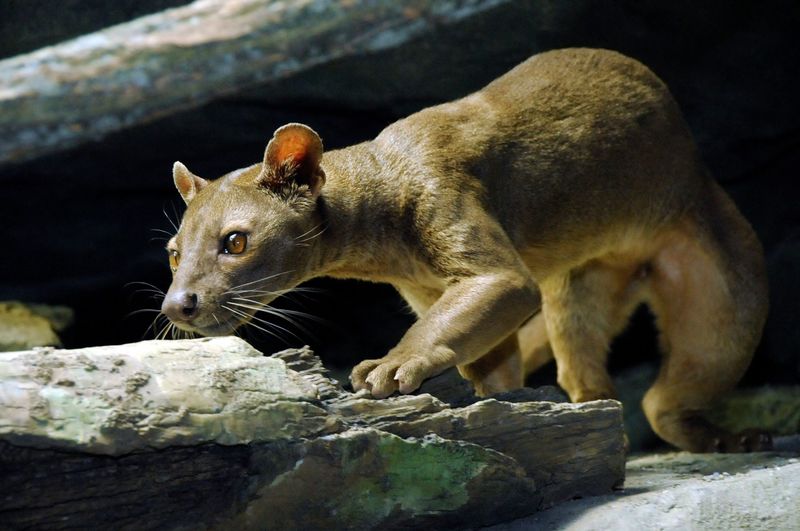
Facing threats from habitat loss and hunting, the fossa is critically endangered. Conservation efforts are crucial to preserving this unique predator.
Protecting its habitat ensures the survival of not just the fossa, but the entire ecosystem that relies on its presence. Awareness and action are key to its future.

